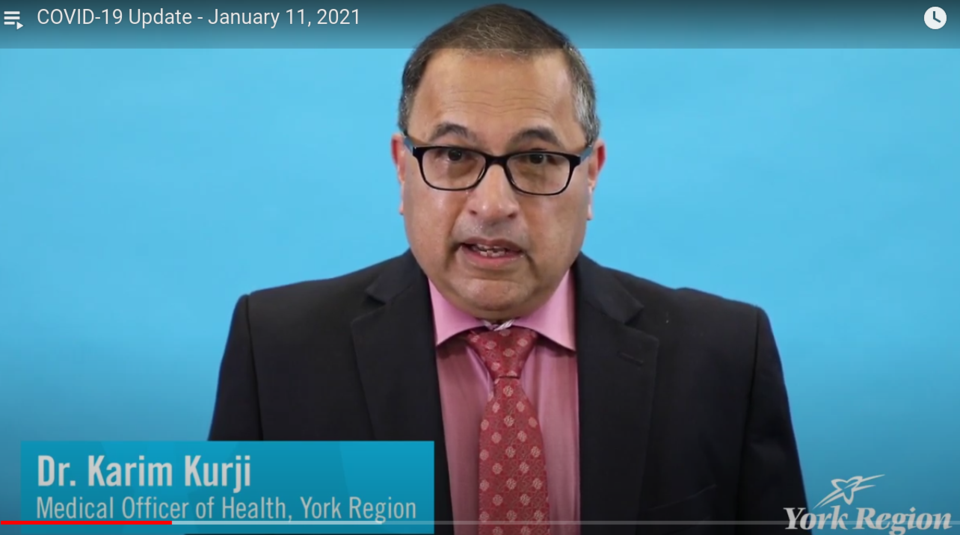York Region’s COVID-19 incidence rate is now the second highest in Ontario — higher even than Toronto and only behind Peel Region, according to the medical officer of health.
The latest comparison data provided by the local public health unit shows that Peel had 211 cases per 100,000 residents, York had 178, Toronto had 162, Durham had 124 and Simcoe-Muskoka had 66 on Jan. 5, according to Dr. Karim Kurji.
As of today, Jan. 11, York Region’s rate has jumped to 199 cases per 100,000 residents over the past seven days.
The incidence rate for the region's northern six municipalities, which includes Newmarket, is 167 cases per 100,000 as of Jan. 11; Richmond Hill is 168; Markham is 178; and Vaughan is 272.
The incidence rates, which have been steadily climbing since September, have skyrocketed in recent weeks.
Throughout the pandemic, the rate for the region's northern six municipalities did not rise above 35 cases until Oct. 31, when it began its steady increase.
When York Region entered the red level on Nov. 16, the rate was at about 80 cases per 100,000 residents, well below Toronto and Peel.
After weeks of avoiding a move into lockdown, the incidence rate had climbed to more than 100 when the province finally decreed York would join Toronto and Peel in the grey lockdown zone on Dec. 16.
Incidence is an epidemiology term used for the measurement of confirmed new COVID-19 cases per day. To enable incidence to be compared across geographies, it is calculated as a proportion of the population — specifically, daily new COVID cases for every 100,000 people.
The daily new cases or incidence metric depicts risk more accurately, since it takes the overall number of cases into account.
The majority of COVID-19 cases continue to be transmitted through close contact within households and gatherings with extended family and friends, Kurji said in his weekly video update.
As well, a significant number of cases are being transmitted among workers in large manufacturing and industrial plants, he added. Thirty-four workplace outbreaks are currently active, with cases since the beginning of the pandemic totalling 2,339.
The public health unit has resorted to using electronic tools to help it manage the rapidly accelerating number of cases, Kurji said.
There have been more than 2,740 cases confirmed in the last days, and more than 4,000 cases — nearly 20 per cent — are under investigation to determine the source of transmission.
The unit is using a “virtual assistant” to send a text message to confirmed cases that directs the individual to fill out an online questionnaire that assists investigators in identifying close contacts who may unwittingly be spreading the virus to others, Kurji said.
He added that travel, both international and to the United States, continues to contribute to transmission in the region because mandatory quarantine measures are not being followed by all travellers on their return.
“We know from having investigated some potential cases of the variant that the quarantine isn’t being practised properly,” Kurji said.
He cited the example of a York Region resident who travelled from Germany to another city and then to Toronto without having any contact with a federal quarantine officer.
Another individual had a family dinner after returning from travel in U.K., he said.
“This isn’t the proper way of practising quarantine and we urge every person who is supposed to be going into quarantine to go into self isolation for 14 days.”
“There shouldn’t be any non-essential travel in the first place, and we hope our residents will abide by that,” he added.

